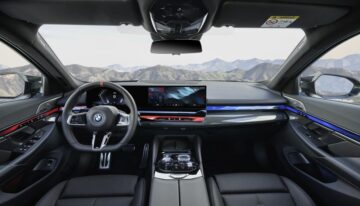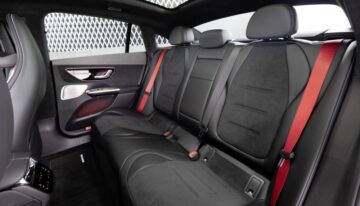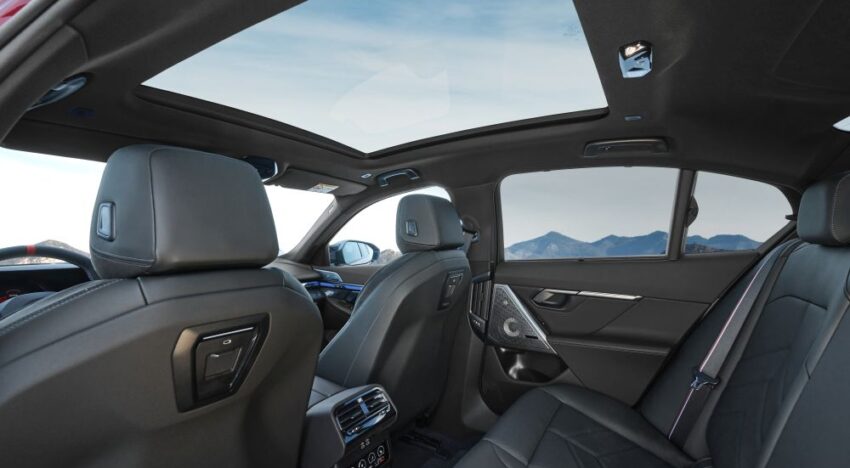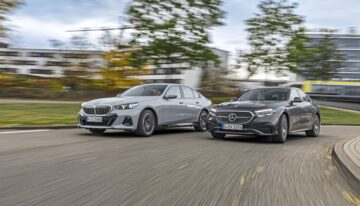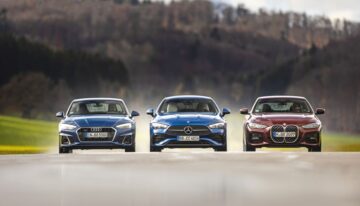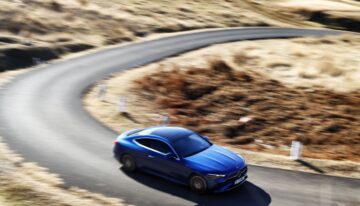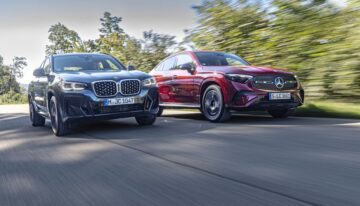With the new BMW 5 Series, BMW is attacking both the new Mercedes E-Class and the Mercedes EQE as it has been offering diesel, petrol, and electric versions since the start of sales.
Gone are the traditional times. Today, instead of the classic Mercedes E-Class vs BMW 5 Series showdown, we have a BMW 5 Series vs Mercedes E-Class/Mercedes EQE showdown. Why?
Because Mercedes has completely separated the platforms for the conventional range and the electric range. The new Mercedes E-Class is the latest Mercedes model built on the conventional MRA II platform while the Mercedes EQE uses the dedicated EVA electric platform.
Let’s review the electric versions.
Launching in spring 2022, the Mercedes EQE already has a full range of versions:
– Mercedes EQE 300, 245 ps/242 hp, 66,902 euros/$72,030
– Mercedes EQE 350, 292 ps/288 hp, 70,710 euro/$76,130
– Mercedes EQE 350 4Matic, 292 ps/288 hp, 73,863 euro/$79,525
– Mercedes EQE 500 4Matic, 408 ps/402 hp, 88,214 euro/$94,976
– Mercedes-AMG EQE 43 4Matic 476 ps/469 hp, 104,755 euro/$112,785
– Mercedes-AMG EQE 53 4Matic, 625 ps/616 hp, 111,491 euro/$120,037

The BMW i5 is available from the start in two versions:
– i5 eDrive40, 313 ps/309 hp (340 ps/335 hp in Sport mode) 70,200 euro/$75,581
– i5 M60 xDrive, 517 ps/510 hp (601 ps/595 hp in Sport mode), 99,500 euro/$107,127

The BMW i5 eDrive40 is slightly cheaper than the Mercedes EQE 350, has more power, and accelerates from 0 to 100 kph (0-62 mph) faster (6.0 s compared with 6.4 s for the EQE 350) because it is 150 kg/331 lbs lighter (2,205 kg/4,861 lbs compared with 2,355 kg/5,191 lbs) than the Mercedes EQE 350 (power to weight ratio of 8.5 kg/kW compared with 10.95 for Mercedes EQE 350).
The lower weight of the BMW i5 eDrive40 is partly explained by the slightly smaller battery capacity of 81.2 kWh net compared to 90.6 kWh in the case of EQE. Therefore, the Mercedes EQE 350 has a slightly longer WLTP range of 633 km (393 miles), compared to 582 km (362 miles) for the i5 eDrive40, but the difference is insignificant. We have to check in real life the range for both cars when the i5 will be available for the drive.
Although the Mercedes EQE is built on a dedicated electric platform, the charging power is lower than the BMW i5, but the charging time is similar, which means the EQE 350 has a better-optimised charging curve. Thus, the EQE 350 charges with a maximum of 170 kW from 10 to 80% in 32 minutes, while the i5 eDrive40 has a charging power of 205 kW and charges from 10 to 80% in 30 minutes. Optionally, both are charging up to 22 kW at AC stations.
The BMW i5 M60 xDrive sports version targets both AMG versions offering similar acceleration and top speeds, although it has a power deficit to the AMG EQE 53 45Matic. So, the i5 M60 xDrive reaches 100 kph (62 mph) in 3.8 s versus 3.5/4.2 s in the AMG EQE 53 4Matic/EQE 43 4Matic, and the top speed is 230 kph (143 mph) versus 220/210 kph (136/130 mph) in rival models. The slightly smaller and lighter battery (81.2 kWh versus 90.6 kWh) contributes to the lower weight. The i5 M60 xDrive weighs 2,380 kg/5,247 lbs) versus 2,525 kg/5,567 lbs for the two AMG EQE models.
How you feel inside
We drove the Mercedes-AMG EQE 43 4Matic and saw the static preview of the new BMW i5 last week. The AMG EQE test model was equipped with an 11.9-inch portrait display, which is the best solution. It’s not worth spending over 8,000 euro/$8,613 on the optional Hyperscreen.
Unlike the BMW i5’s OS8 operating system, the operation is more logical and easier in the Mercedes, direct access to the climate control is more logical as is the seat menu. We also appreciate Mercedes’ control of the instrument cluster and multimedia system from the two mini-touchs located on the steering wheel arms, left for the instrument cluster and right for the multimedia.
In contrast, as with the Mercedes EQS/BMW i7, the BMW i5 has better materials and finish than the AMG EQE 43.
Interior space
The new BMW i5 is a very big car. It is the first 5 Series in history to be longer than 5 meters. But at 5,060 mm/199.2 in long, the wheelbase is just 2,995 mm/117.9 in. Looking at the dimensions, you can see the advantage of Mercedes’ dedicated platform.
At a length of 4,946 mm/194.7 in, the AMG EQE 43 has a wheelbase of 3,120 mm/12.8 in, 125 mm/4.92 in longer than the BMW. Staying on the rear bench of the new BMW i5 for the first time, we can tell that the Mercedes has more knee room. In contrast, the BMW i5 has a larger boot, 490 liters/129 gallon, compared to 430 liters/113.6 gallon in the Mercedes due to the longer length.
Mercedes EQE has also a separate trunk like BMW i5, while Mercedes EQS features a hayon.
Different suspension systems
The two models have very different running gears. The Mercedes-AMG EQE 43 4Matic has a four-link front suspension and a five-link rear suspension and features air suspension on all four wheels. The air suspension uses two valves that independently control the compression and rebound phases and allow for varying ground clearance. It’s roughly the same suspension as the AMG EQS with the difference that the EQE AMG’s rear axle subframe is 50% stiffer connected to the body, and the rear axle steering angle is 3.6 degrees compared to 4.5 or optionally 10 degrees on the EQS.
Because the i5 uses the conventional CLAR platform, it has a double-wishbone front suspension and a five-link rear suspension. At the front, the BMW i5 uses conventional shock absorbers, and at the rear, standard air suspension.
Optionally, adaptive suspension can be ordered instead of air suspension on all 4 wheels as on the i7. Additionally, the top version i5 M60 xDrive comes standard with MSport and Adaptive Professional suspension, 8 mm lower than the i5 eDrive40, with all-wheel steering (2.5-degree steering angle). Optionally, you can order active stabilizer bars (available across the range) which are not available on the Mercedes EQE.
In the Mercedes-AMG EQE 43 4Matic test, we noticed the high comfort level even though the test car was equipped with 21-inch wheels. We can’t yet give a verdict on the i5, but we expect that, as with the i4 M50, the drivetrain will offer more comfort than the M4.
Mercedes is more expensive
The dedicated electric platform has raised costs on the Mercedes EQE. Thus, the EQE 350 is 500 euro/$538 more expensive than the i5 eDrive40 despite having 21 ps/20.7 hp less power, while the AMG EQE 43/53 are 5,255/12,000 euro ($5,657/12,919) more expensive than the i5 M60 xDrive respectively.

